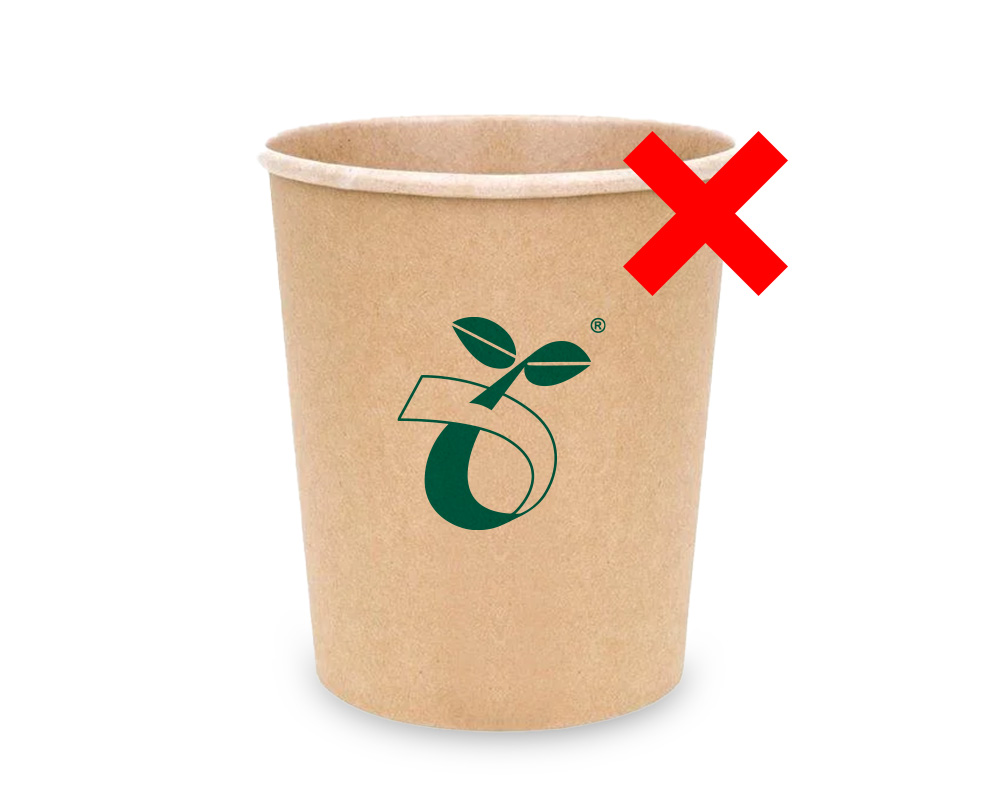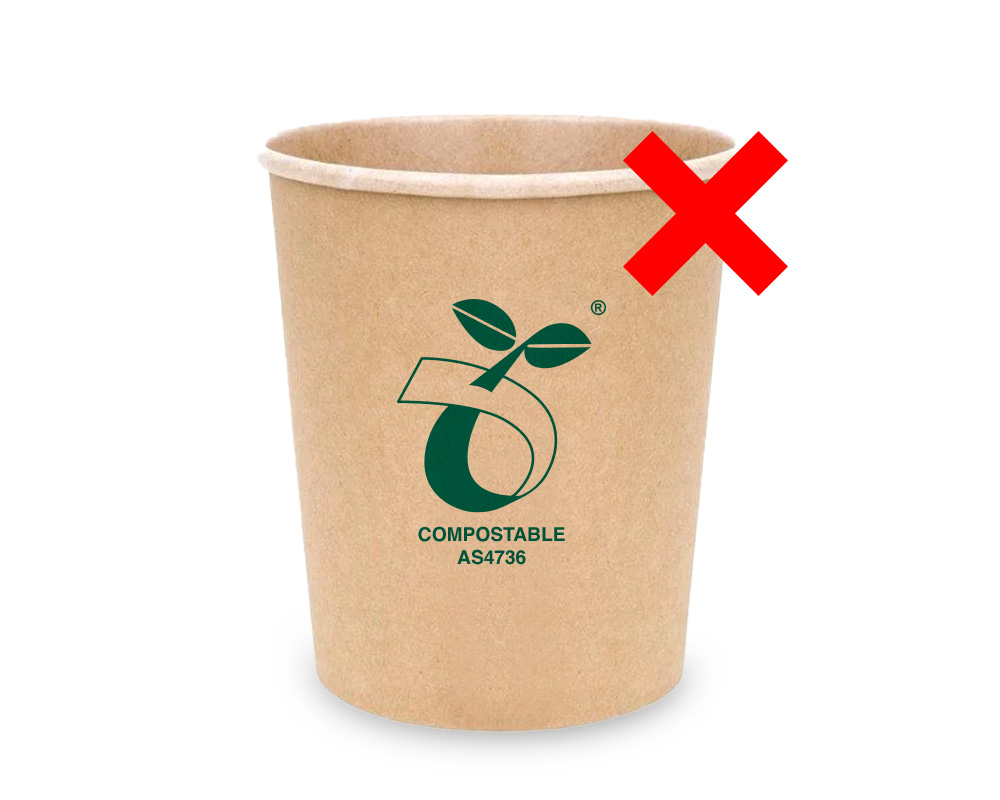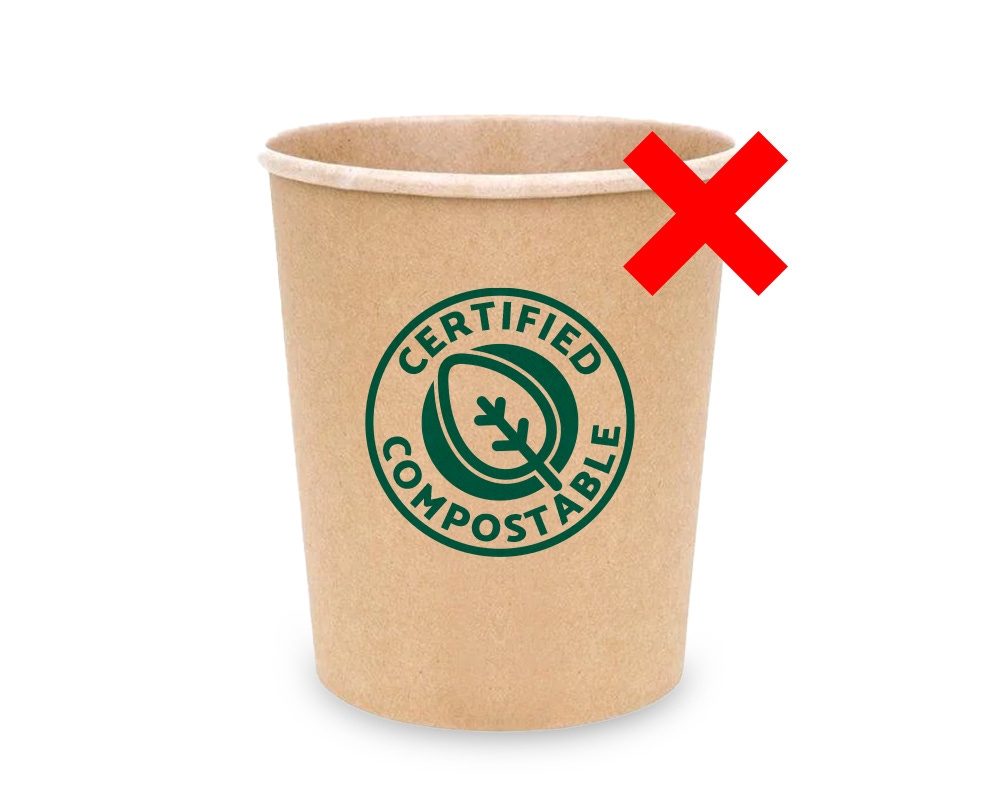Today, consumers and businesses are becoming increasingly aware of their impact on the environment. But with that, we’re seeing more and more businesses throw around loose claims and buzzwords like “green” and “eco-friendly”. Often, these claims are exaggerated, aspirational or downright untrue.
It’s called greenwashing – when organisations make their products, services or practices seem more environmentally friendly than what they actually are. At BioPak, we’re working to take a stand against greenwashing, which will help us move toward a world where businesses are accountable for the claims they make.
This article will explore:


What is Greenwashing?
So, what’s the greenwashing meaning? The term ‘greenwashing’ was first adopted in the 1980s — and now, with the rise of digital marketing and concern for the environment, the practice is all too common (source).
At its core, greenwashing is false, misleading or untrue actions or claims made by an organisation in relation to the positive impact their product, service or business has on the environment.
Greenwashing is concerning because it makes it difficult for consumers to make environmentally conscious decisions. Not to mention, the negative impacts on the environment.
But here’s the clincher: the global population is becoming more and more switched on to greenwashing with a recent study showing 72% of people say they don’t believe some brands are as environmentally friendly as they say they are (source). We can feel the change coming.
How Common Is Greenwashing?
Greenwashing is more common than we’d like to think.
A recent internet sweep (‘the sweep’) by the Australian Competition and Consumer Commission (ACCC) looked at 247 different businesses across eight sectors. More specifically, they looked at their claims in relation to the environment and sustainability (source).
The sweep found up to 57% of businesses made concerning claims. What’s more, the packaging sector was found to have the most instances of concerning claims.
At BioPak, we’re working to change this.
How To Spot Greenwashing?
Spotting greenwashing isn’t always straightforward – businesses can be clever in the way they use deceitful environmental claims. It’s understandable if you’ve fallen for it in the past.
Thankfully, we’re about to explore how to spot greenwashing by looking at the telltale signs an organisation might be engaging in deceptive environmental claims.
Vague or Unqualified Claims That Aren't Backed Up by Certifications
This could be using vague terms like “eco-friendly”, “sustainable”, “responsible”, “green” or “kind to the planet” with no real evidence to back it up. For example, a clothing label may call its range of jackets sustainable, without elaborating on their material, supply chain and production process. Therefore, it loses value for the consumer.
No Evidence
Businesses might make unsubstantiated environmental claims with no evidence to back them up. They might have broken or outdated links, which makes it difficult for you to verify. Alternatively, they might have no links at all.
Misleading Comparisons That Don't Tell the Full Story
Businesses can sometimes compare their products and practices to an alternative to make them appear environmentally superior. While this can be useful if done with transparency, sometimes businesses use misleading comparisons that don’t give the full story. They may also fail to provide evidence of these findings.
Exaggeration
Exaggeration is evident when businesses embellish the good they’re doing, while downplaying the bad. An example of this is if a business is always talking about its investment in renewable energy projects or environmental charities while failing to change any of its harmful environmental practices.
Aspirational Claims Without Any Action Plans
From reducing waste to lowering carbon emissions, businesses might rave about what they’re planning to do. We acknowledge it’s important to strive for continuous improvement, but there’s a way to go about it. An honest business will communicate a clear plan on how they’re going to achieve their environmental goals. If a business makes aspirational claims without information on how they’ll achieve them, this is greenwashing.
Unclear Certifications
Certifications exist for transparency, helping businesses and consumers feel confident in the products and services they support. But unfortunately, certifications can even be unclear or fabricated.
Examples of greenwashing are when businesses don’t go into detail on what the certification is, or they use certifications in a misleading way.
Here are some examples:


- They might not be clear on whether a certification applies to a whole product range or just one product.


- A brand company might use a certification icon (for example, the seedling logo) but doesn’t have a certification number beneath it making it hard for the consumer to know how to correctly dispose of the product.


- A brand might use a certification icon (for example, the seedling logo) without referencing their company’s certification licence beneath it, this might mean their product or business isn’t actually certified.


- Lastly, and perhaps worst of all, a business might create their own “icon” misleading consumers into thinking their product is certified to some official standard.
Nature-Based or Green Imagery
Businesses using leaves, plants or greenery in their advertising or packaging is OK – provided they’ve got evidence of their environmental commitment to back it up (this is the case for BioPak). If there’s no supporting evidence or certifications, only leafy imagery intended to mislead consumers is greenwashing.


Beware of Greenwashing in the Packaging Industry
Of the 40 packaging businesses investigated in ‘the sweep’, 22 raised concerns in relation to their claims. These concerns ranged from a lack of supporting evidence to using third-party symbols incorrectly.
At BioPak, we’ve highlighted what we consider to be the most common and detrimental claims within the packaging industry.


“Compostable”
Businesses can say their product is compostable, but remember, to “adhere” to compostability standards is not the same as being certified.


Look for the home or industrial compostable logo on the product, and more importantly, the company’s specific licence number (this can be verified in the Australasian Bioplastics Association database).


“Recyclable”
Businesses can say their packaging is recyclable, but it may look different in practice.


Check for the ARL logo on the packaging for guidance on how to best dispose of it. This logo system has been developed by APCO as part of their "Australasian Recycling Label Program."


“Biodegradable”
Here’s the thing, everything “biodegrades” eventually. So to call a product biodegradable without elaborating is greenwashing. Look for the term compostable instead.


Packaging businesses should be straight up about the time it takes for the product to biodegrade. Will it take a year or 500 years?


“Plastic free”
You often see aqueous home compostable products labelled as "plastic-free".
Statements like this are unjustified and incorrect since all bioplastics and aqueous materials are still technically plastic — the difference is the way they’re produced and disposed of.


Look for detailed information about a product’s materials rather than vague and absolute claims.
How To Avoid Greenwashing as a Business
We know that greenwashing is harmful, unethical and common. So how do we avoid it?
7 Ways To Avoid Greenwashing as a Business


1. Back Up Your Claims and Be Specific
Use evidence to back up your claims and take the time to understand the detail and science behind what you’re saying. Part of backing up your claims is being specific. For example, instead of saying “made from recycled plastic” you could say “made from 60% recycled plastic.” Or instead of saying “compostable” you could say “certified industrially compostable to Australian and European Standards (AS4736, EN13432), which means under commercial composting conditions this product will break down within twelve weeks.” See the difference? Remember you must actually hold these certifications to make these claims.
2. Avoid Environmental Buzzwords
Avoid using words like “sustainable”, “green” and “kind to the planet” with no evidence to back it up. As greenwashing becomes increasingly common, these words are losing their impact and value if they’re not supported by evidence. Consumers are looking for more information about what you’re doing rather than fluffy language. If you’re using these terms, you should clearly outline the evidence on your website to back up these claims. Better yet, you could release an annual sustainability report.
3. Acknowledge Your Shortcomings and Failures
There’s no such thing as perfect sustainability. By acknowledging your negative environmental impacts and taking accountability for your actions, consumers will develop trust in your brand. When you talk about your negative impacts, you can also dive into what you’re doing to address them.
For example, at BioPak we believe PLA bioplastic is a better alternative to traditional plastics, yet we still acknowledge the disadvantages of the material. We also remain at the forefront of the sustainable packaging industry, with the goal of bringing new and innovative materials to market as technology evolves.
4. Be Specific About Your Goals
Avoid saying things like “we’re striving to reduce our carbon footprint” without specifying what you’re actually doing to get there. What’s your carbon reduction target? When do you plan to achieve it? And most importantly, how do you plan to get there? Be as specific and detailed as possible and provide updates throughout the journey. See our Sustainability Report for examples under ‘Our Progress’.
5. Give the Full Story When Using Comparisons
Comparisons can be misleading. Always give the full story when using comparisons — even if that means communicating the current limitations of your product.
For example, at BioPak we believe PLA bioplastic or plant fibre has many advantages over traditional plastics. It’s made from renewable and circular materials and creates less greenhouse gas emissions in production. Yet at the same time, we can acknowledge that PLA bioplastic is often more expensive than traditional plastic (at least for now).
6. Use Certifications Correctly
Got an environmental certification? Great. Now it’s time to go into detail about what the certification is, what it means and the specific products and services it applies to. Avoid implying the certification might apply to all your products, when really, it might only be one.
For example, BioPak sells containers, takeaway bags and wooden cutlery that are made from FSCTM certified paper and/or wood. Of course, this certification cannot be applied to our other products made from sugarcane pulp or bioplastic.
7. Avoid Sustainability Cliches
Covering your branding in the colour green or using leafy imagery, without being clear on your sustainability efforts, is a form of visual greenwashing. Another sustainability cliche is defining your brand’s core values purely for marketing purposes — then not living and breathing these values in your work.
As a business, becoming conscious of greenwashing, recognising it, and then actively avoiding it is a giant stride toward purposeful communication and environmental action. By resisting the urge to greenwash, you’ll position your business as a true leader in sustainability – warts and all.
Change Is Coming
Following the ACCC internet sweep (‘the sweep’), the ACCC has released draft guidance to help businesses improve their environmental claims. This sets out what the ACCC considers to be good practice. By becoming familiar with this guidance now, you can avoid making any misleading environmental claims and stay compliant, well ahead of any potential legislation changes.













